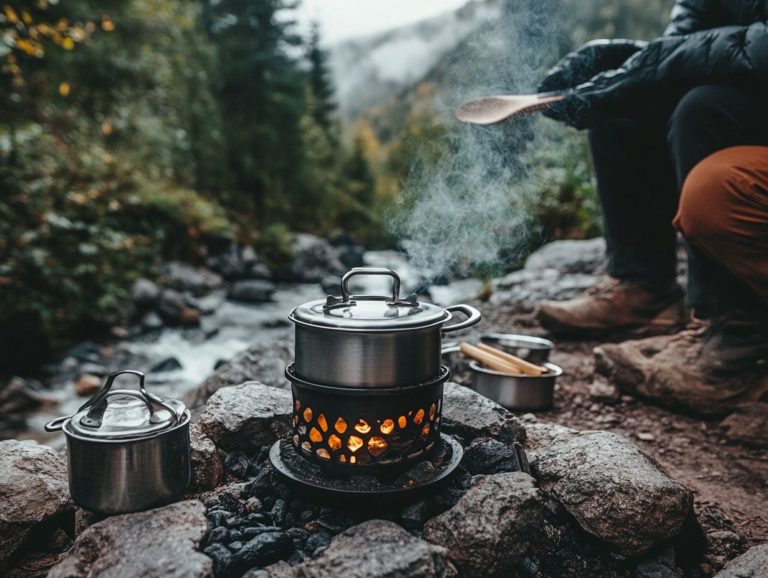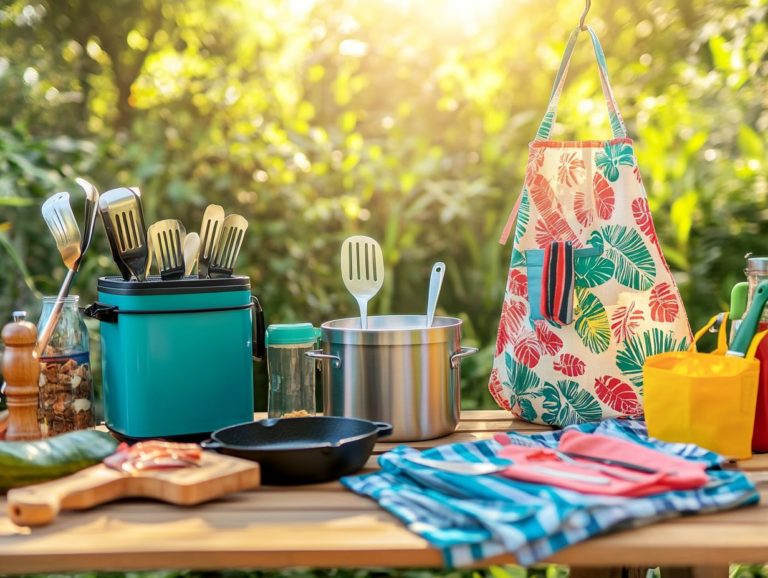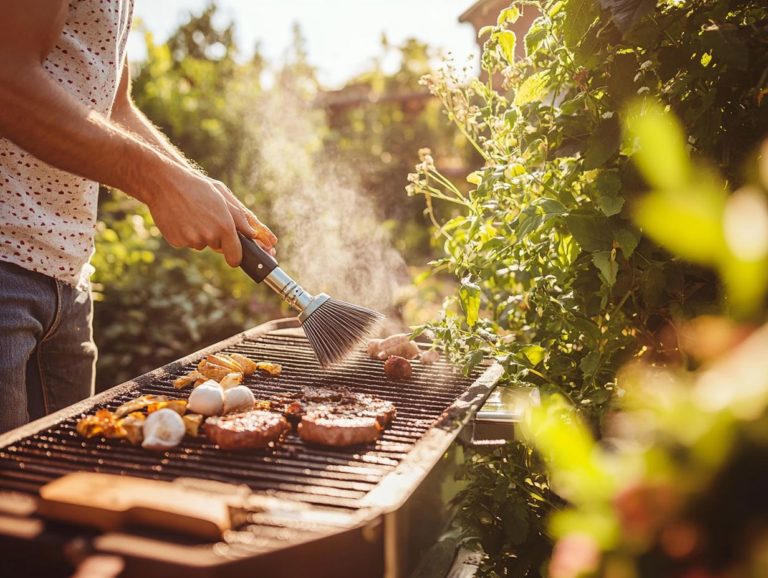How to Choose Non-Toxic Outdoor Cooking Gear
When planning your next outdoor adventure, the right cooking gear can truly elevate your experience. But have you ever paused to think about potential toxins hiding in traditional cookware?
Let s explore why choosing non-toxic outdoor cooking gear is crucial for your health. This article highlights harmful materials like PFAS chemicals and showcases eco-friendly alternatives.
You ll discover key factors to consider, the benefits of going non-toxic, and practical tips for safer options. Start embracing a healthier, sustainable cooking experience outdoors today!
Contents
- Key Takeaways:
- Understanding Non-Toxic Outdoor Cooking Gear
- Types of Non-Toxic Outdoor Cooking Gear
- Factors to Consider When Choosing Non-Toxic Gear
- Benefits of Using Non-Toxic Outdoor Cooking Gear
- How to Transition to Non-Toxic Gear
- Frequently Asked Questions
- What exactly is non-toxic outdoor cooking gear?
- Why is it important to choose non-toxic outdoor cooking gear?
- How can I determine if outdoor cooking gear is non-toxic?
- What materials should I avoid in outdoor cooking gear?
- Can I use regular cooking gear for outdoor cooking?
- Is non-toxic outdoor cooking gear more expensive?
Key Takeaways:

- Choose non-toxic outdoor cooking gear to protect your health and the environment.
- Consider safety, durability, and functionality when selecting eco-friendly gear.
- Transition to non-toxic gear by researching materials and brands. Implement small changes over time.
Understanding Non-Toxic Outdoor Cooking Gear
Understanding non-toxic cookware is vital for anyone eager to whip up delicious meals while prioritizing health. The popularity of non-toxic cookware has surged due to awareness of harmful substances, especially PFAS chemicals.
This knowledge allows you to make informed decisions. You can choose safe options like ceramic-coated cookware, carbon steel, cast iron, and stainless steel.
By opting for these materials, you ensure your outdoor cooking experience is enjoyable and safe, especially when you learn how to safely cook with kids in the outdoors, without the worry of toxic substances leaching into your food.
What Makes Outdoor Cooking Gear Toxic?
Outdoor cooking gear can hide dangers, with harmful substances like PFAS, PFOA, and Gen X chemicals lurking within. Dubbed ‘forever chemicals,’ these substances resist breakdown and can accumulate in your body.
These chemicals are linked to serious health concerns, from liver damage to developmental problems in children. Research suggests over 200 million Americans might have encountered PFAS through contaminated water, revealing a widespread threat.
These substances seep into soil and waterways, causing environmental contamination. Studies show that PFAS are found in the blood of 97% of Americans, emphasizing their prevalence and potential risks.
As outdoor enthusiasts prepare meals, the weight of these chemical hazards is palpable. This prompts a crucial conversation about safer alternatives for a healthier experience in nature.
Types of Non-Toxic Outdoor Cooking Gear
When selecting non-toxic outdoor cooking gear, you have various options, each with unique benefits.
Consider ceramic-coated cookware, stainless steel, and carbon steel. These are becoming popular alternatives to traditional PTFE nonstick cookware that often contain harmful substances.
Cast iron cookware stands out for its durability and heat retention. This ensures your outdoor cooking is safe and enjoyable.
Eco-Friendly Materials and Brands
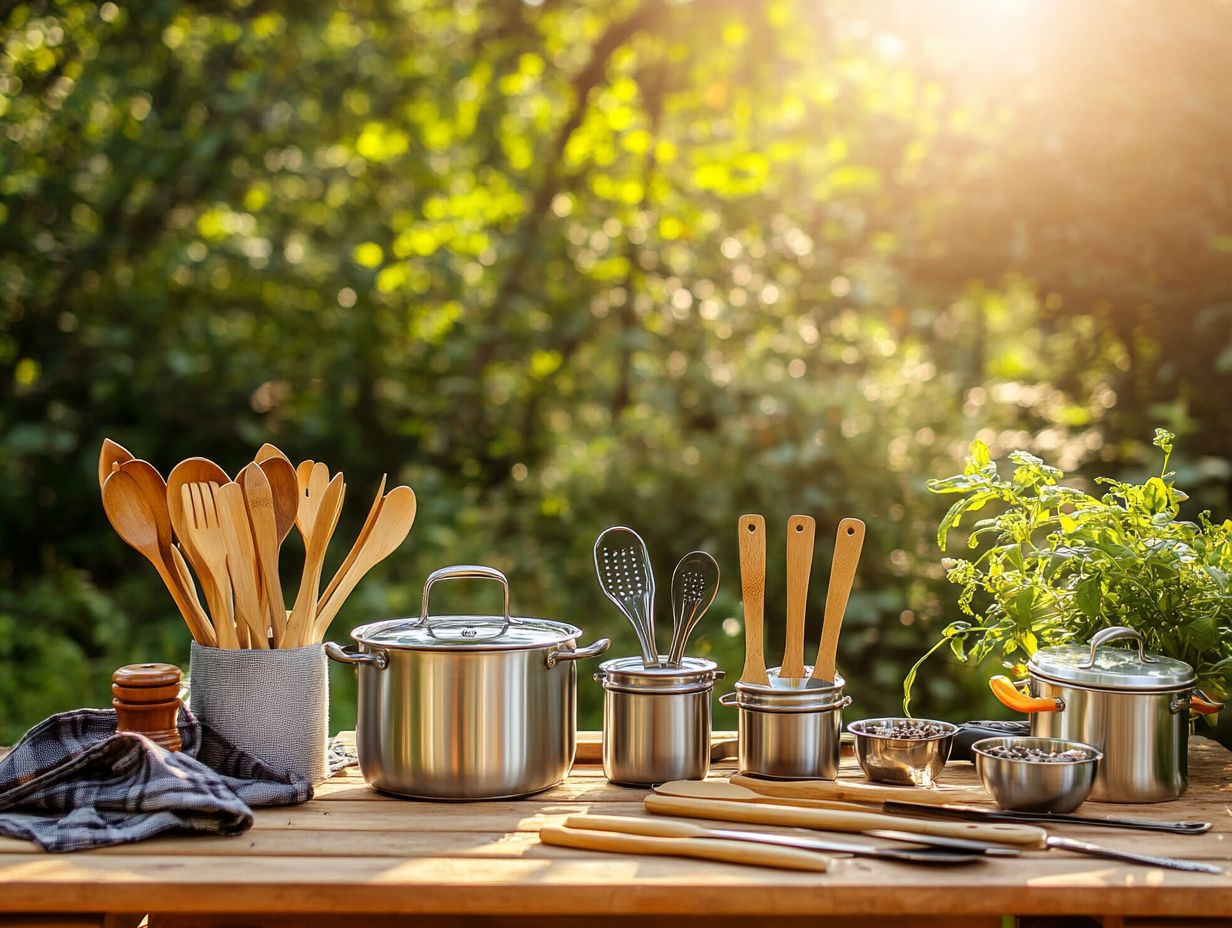
Eco-friendly materials are crucial in the cookware industry. Brands like GreenPan, Caraway, Xtrema, Demeyere Atlantis 7, Staub, and All-Clad lead the sustainable cookware movement.
These brands redefine cooking experiences by offering non-toxic alternatives like ceramic, stainless steel, and cast iron. These materials are free from harmful coatings and chemicals found in traditional cookware.
As you become aware of your choices, you likely seek products that align with your values of sustainability and health. Reputable cookware recommendations from sources like Organic Authority and the Environmental Working Group (EWG) are helpful.
Research highlights the importance of selecting cookware that enhances your cooking while minimizing exposure to harmful substances.
This choice improves your well-being and shows a commitment to environmental stewardship. You can proudly embrace this shift in response to regulations like California Prop 65, which limits exposure to harmful chemicals.
Factors to Consider When Choosing Non-Toxic Gear
When choosing non-toxic outdoor cooking gear, focus on safety, durability, and suitability. For more detailed guidance, check out this resource on how to choose safe cooking equipment for outdoors. Pay attention to cookware labels to ensure quality.
Materials like stainless steel and cast iron are essential for the longevity of your cookware. Functionality is also important to meet your cooking requirements without sacrificing health.
Understanding cookware labels helps you identify non-toxic options free from harmful chemicals. This enhances your kitchen safety and overall cooking experience.
Safety, Durability, and Functionality
When selecting non-toxic cookware, prioritize safety, durability, and functionality. These factors significantly affect your cooking quality and health.
These attributes enhance your cookware’s longevity and impact performance. For example, stainless steel is durable and safe, making it a favorite among chefs.
Cast iron is another great option, offering excellent heat retention and even cooking. If you prefer non-stick options, ceramic coatings allow for lower-fat cooking with minimal sticking.
When your cookware meets these criteria, it fosters a healthier cooking environment and elevates your cooking experiences.
Benefits of Using Non-Toxic Outdoor Cooking Gear
Choosing non-toxic outdoor cooking gear has many benefits for your health and the environment. It reduces your exposure to harmful chemicals like PFAS, making it essential to learn how to prepare for safe outdoor cooking experiences.
Selecting safe cookware protects your health by minimizing chemical exposure. It also contributes to a cleaner environment, as emphasized by EWG research.
Environmental and Health Benefits
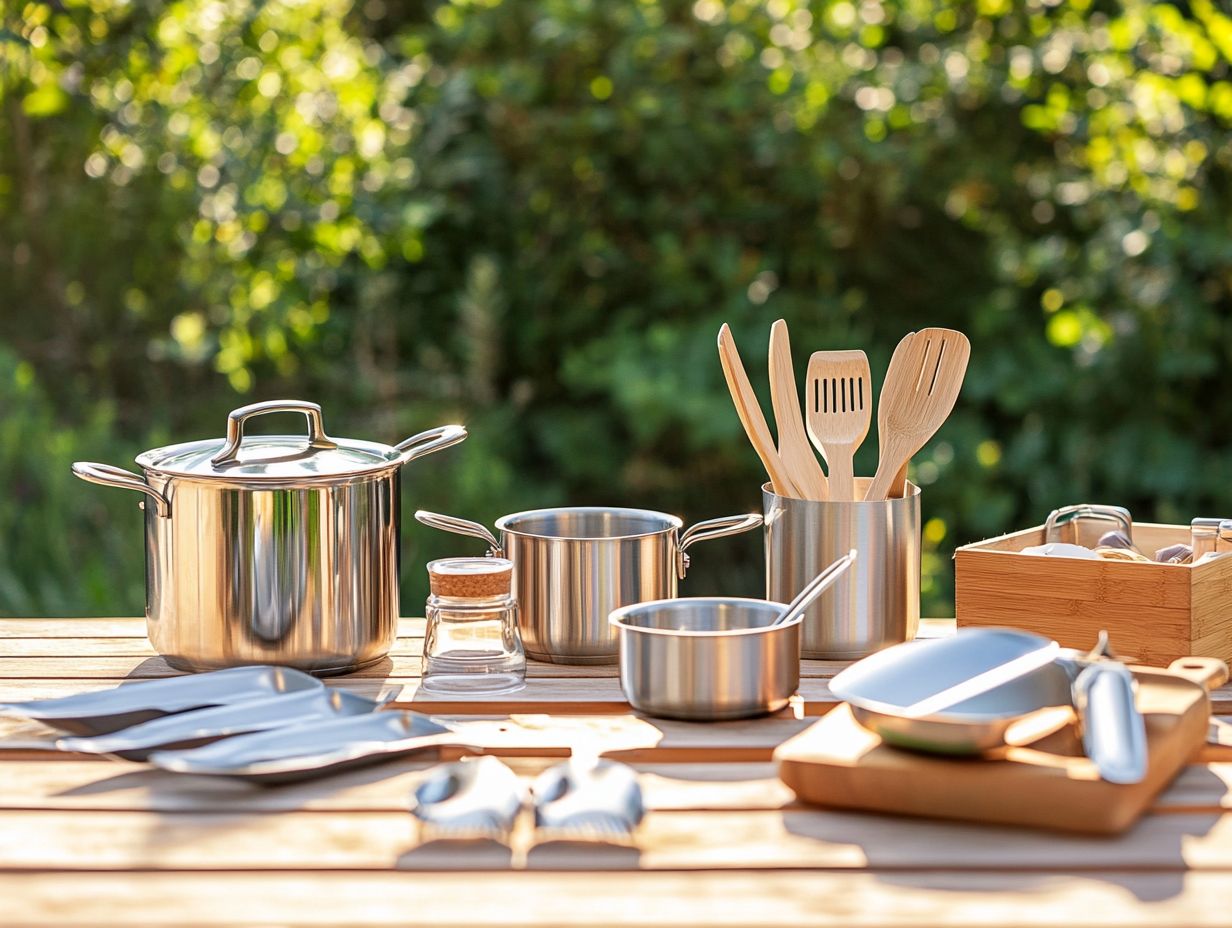
The environmental and health benefits of using non-toxic cookware are significant, especially when considering the impact of harmful chemicals. By opting for these alternatives, you reduce your exposure to harmful chemicals in the kitchen and contribute positively to the health of our planet.
Research from the Environmental Working Group (EWG) shows that traditional cookware often leaches harmful chemicals, such as PFAS (a group of chemicals used in various products) and Teflon (a non-stick coating), into food. This can have long-lasting effects on both human health and the environment. Non-toxic options, like stainless steel and ceramic, reduce these risks, allowing you to prepare meals with peace of mind, free from harmful substances.
When you choose eco-friendly cookware, you actively participate in minimizing pollution and promoting sustainable practices in manufacturing. Studies show a connection between reduced chemical exposure and improvements in health metrics, highlighting the broader implications for your well-being and the integrity of our ecosystems.
How to Transition to Non-Toxic Gear
Switching to non-toxic outdoor cooking gear is an exciting step towards a safer kitchen! With the growing awareness of health risks associated with toxic cookware, it’s essential to make informed choices, such as learning how to safely use cast iron cookware outdoors.
Select cookware that clearly indicates non-toxic materials on its labels to ensure a safe and enjoyable cooking experience.
Tips for Making the Switch
Making the switch to non-toxic cookware might feel overwhelming, but with a few straightforward tips, you can easily transition to safe cookware that prioritizes your health and kitchen safety. Avoid materials like aluminum and PTFE coatings.
Start by examining the labels on your current cookware. Look for terms like PFOA-free or PTFE-free, as these indicate safer choices. Be cautious with materials like aluminum and non-stick finishes, which can harbor harmful chemicals.
When searching for new, non-toxic options, prioritize materials such as stainless steel, cast iron cookware, or ceramic. These materials align with sustainable cookware practices and are known for their safety and durability.
It s wise to gradually phase out old cookware. Consider recycling or donating items that no longer meet your standards. This not only helps you clear your space but also aids others in their cooking endeavors.
Ultimately, understanding cookware labels is crucial. It enables you to make informed choices that enhance your overall well-being.
Frequently Asked Questions
What exactly is non-toxic outdoor cooking gear?
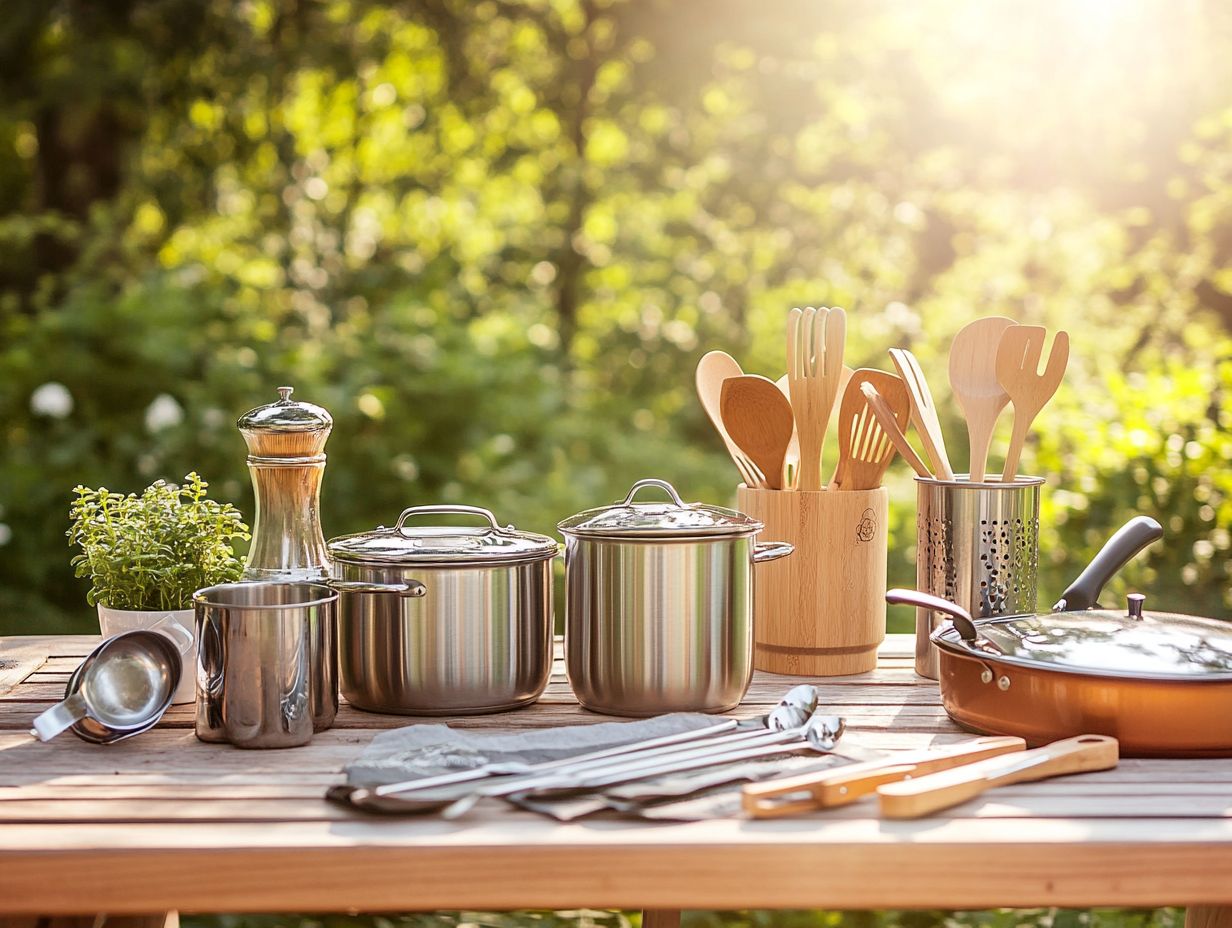
Non-toxic outdoor cooking gear is equipment free from harmful chemicals and materials, such as lead, phthalates, and BPA. These materials can leach into your food. Choosing non-toxic gear for outdoor cooking is essential to avoid health risks, and knowing how to clean outdoor cooking gear properly can help maintain its safety and longevity.
Why is it important to choose non-toxic outdoor cooking gear?
Choosing non-toxic outdoor cooking gear is important because harmful chemicals can leach into your food, especially when exposed to high heat. To further enhance your safety, it’s crucial to learn how to handle cooking utensils safely outdoors. By opting for non-toxic gear, you can ensure the safety of your food and your health.
How can I determine if outdoor cooking gear is non-toxic?
You can determine if outdoor cooking gear is non-toxic by checking the product label or researching the brand. Additionally, it’s important to consider if outdoor cooking is safe by looking for certifications such as BPA-free or non-toxic materials used in the product. You can also check for independent lab testing results for added assurance.
What materials should I avoid in outdoor cooking gear?
Avoid materials like plastic, aluminum, and coatings that prevent food from sticking. They can contain harmful chemicals.
Instead, choose gear made from stainless steel, cast iron, or ceramic. These materials are safe and non-toxic.
Can I use regular cooking gear for outdoor cooking?
Using regular cooking gear outdoors is possible, but it s not the best choice. Regular gear may not withstand the elements and could pose safety risks.
Outdoor cooking gear is specifically designed for this purpose, often made from safer materials.
Is non-toxic outdoor cooking gear more expensive?
Non-toxic outdoor cooking gear can be slightly pricier than standard options. However, investing in the best outdoor cooking gear for beginners is worthwhile for your health and safety.
Plus, this gear is typically more durable and lasts longer, making it a smart choice for your outdoor adventures!


